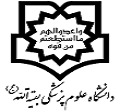(2018) Update on Transmission Modes of Hepatitis C Virus Among Volunteer Iranian Blood Donors: Analysis of a Matched Case-Control Study by Penalized Conditional Logistic Regression. Hepatitis Monthly. p. 8. ISSN 1735-143X
|
Text
Update on transmission modes of hepatitis C virus among volunteer Iranian blood donors Analysis of a matched case-control study by penalized conditional logistic regression.pdf Download (144kB) |
Abstract
Background: Reducing the risk of transfusion transmitted infections (TTI) is one of the main concerns of blood transfusion systems. Evaluation of HCV risk factors in HCV infected blood donors is critical for donor selection and ensuring blood safety. The aim of this study was to evaluate known and putative risk factors of HCV infection in Iranian blood donors. Methods: This matched case-control study was conducted on serologically confirmed HCV positive blood donors (cases) and serologically negative HCV blood donors came back to Iranian Blood Transfusion centers over the country from November 2015 to May 2017. Cases and controls were matched by donation status and interviewed for demographic, medical, and risk histories. Penalized conditional logistic regression model with backward selection method was used in data analysis. STATA software version 13 was used for statistical analysis. Results: A total of 271 cases and 794 controls were interviewed. Age (AOR (5 year), 1.27; 1.13 - 1.42), intravenous drug abuse (AOR, 24.89;10.2 - 60.82), religious self-flagellation (AOR, 7.02; 2.02 - 24.4), non-injecting drug abuse (AOR, 6.13; 2.49 -15.13), history of blood transfusion (AOR, 5.22; 1.52 - 17.92), imprisonment (AOR, 4.81; 2.43 - 9.53), sharing personal razor (AOR, 4.55; 1.45 -14.28), tattooing (AOR, 4.46; 2.37 - 8.38), extramarital sexual activity (AOR, 2.88; 1.40 - 5.87), cupping in outpatient place (AOR, 2.44; 1.08 - 5.52), tooth extraction (AOR, 2.35;1.46 -3.78), surgery (AOR,1.98; 1.22 -3.21), and intramuscular injection (AOR,1.68; 1.06 - 2.68) found to be current independent risk factors for HCV infection demonstrated in 98.52 of cases. Conclusions: This is the first study to perform penalized conditional logistic regression model in data analyzing to control some statistical bias in the evaluation of HCV risk factors among Iranian blood donors. According to the results, intravenous drug abuse is a primary HCV-risk factor. In addition, the study-emphasizes on the role of other high-risk behaviors such as religious self-flagellation and high-risk procedures such as cupping in outpatient place in HCV transmission. Increasing donor education regarding HCV risk factors and more accurate donor selection needs to improve blood safety and protect recipients from potential HCV infection risk.
| Item Type: | Article |
|---|---|
| Keywords: | Risk Factor Blood Donors Hepatitis C Case-Control Iran risk-factors global epidemiology infection hcv Gastroenterology & Hepatology |
| Divisions: | |
| Page Range: | p. 8 |
| Journal or Publication Title: | Hepatitis Monthly |
| Journal Index: | ISI |
| Volume: | 18 |
| Number: | 10 |
| Identification Number: | https://doi.org/10.5812/hepatmon.69395 |
| ISSN: | 1735-143X |
| Depositing User: | مهندس مهدی شریفی |
| URI: | http://eprints.bmsu.ac.ir/id/eprint/3588 |
Actions (login required)
 |
View Item |



